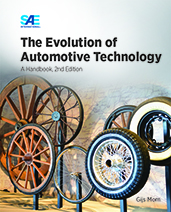Book

The Evolution of Automotive Technology: A Handbook, Second Edition
2023-05-17
The idea of "understanding the present through its history" is based on two insights. First, it helps to know where a technology comes from: what were its predecessors, how did they evolve as a result of the continuous efforts to solve theoretical and practical problems, who were crucial in their emergence, and which cultural differences made them develop into divergent families of artifacts? Second, and closely related to the first insight, how does a certain technology or system fit into its societal context, its culture of mobility, its engineering culture, its culture of car driving, its alternatives, its opponents? Only thus, by studying its prehistory and its socio-cultural context, can we acquire a true ‘grasp’ of a technology.
